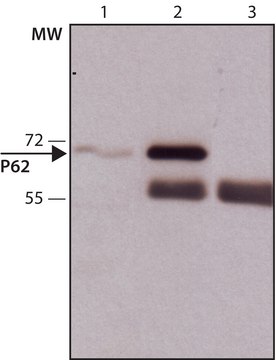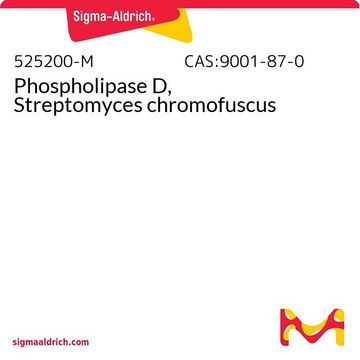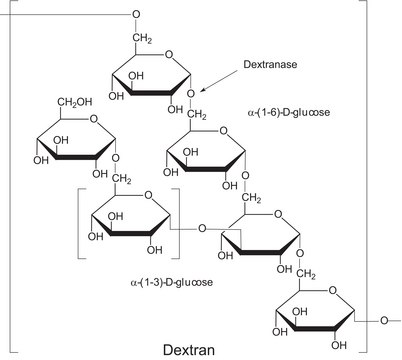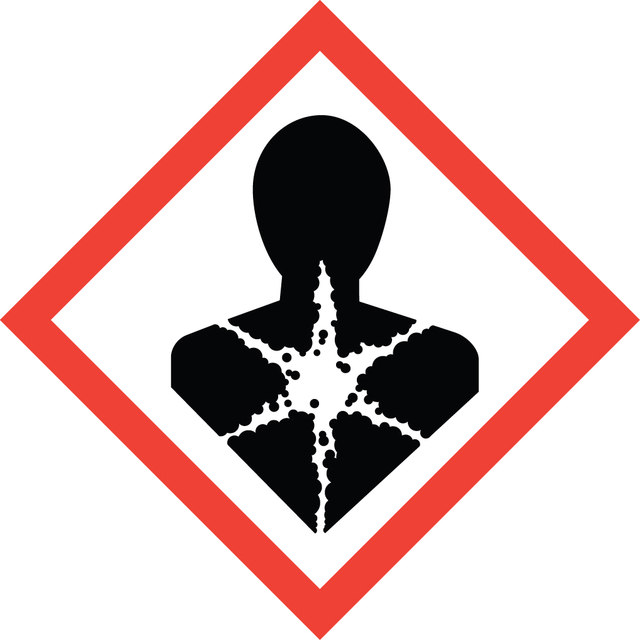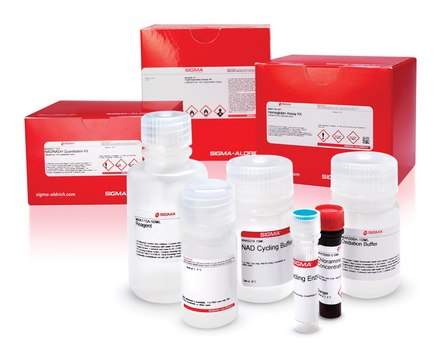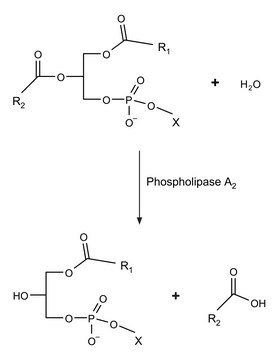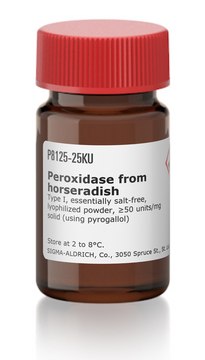P4912
Phospholipase D from Streptomyces sp.
Type VII, lyophilized powder, ≥150 units/mg solid
Synonym(s):
Lecithinase D, Phosphatidylcholine phosphatidohydrolase
Sign Into View Organizational & Contract Pricing
Select a Size
500 UNITS
$674.00
1000 UNITS
$1,170.00
$674.00
Please contact Customer Service for Availability
Select a Size
Change View
500 UNITS
$674.00
1000 UNITS
$1,170.00
About This Item
$674.00
Please contact Customer Service for Availability
Recommended Products
biological source
Streptomyces sp.
Quality Level
type
Type VII
form
lyophilized powder
specific activity
≥150 units/mg solid
storage temp.
−20°C
1 of 4
This Item | D4668 | D5884 | P8398 |
|---|---|---|---|
| specific activity ≥150 units/mg solid | specific activity 100-250 units/mg protein | specific activity 10-25 units/mg solid | specific activity ≥100 units/mg solid |
| biological source Streptomyces sp. | biological source - | biological source - | biological source - |
| form lyophilized powder | form lyophilized powder | form lyophilized powder | form lyophilized powder |
| storage temp. −20°C | storage temp. 2-8°C | storage temp. 2-8°C | storage temp. −20°C |
| Quality Level 200 | Quality Level 200 | Quality Level 200 | Quality Level 200 |
| type Type VII | type - | type - | type Type IV |
Application
Phospholipase D (PLD) has been used to hydrolyze the phosphate bonds of phospholipids and sphingomyelin to yield the corresponding phosphatidic acid. It has also been used to study metabolic labeling and direct imaging of choline phospholipids in vivo by measuring propargyl-Cho incorporation. Furthermore, PLD has been used in purification and kinetic studies.
Biochem/physiol Actions
Hydrolyzes the phosphate bonds of phospholipids and sphingomyelin to give the corresponding phosphatidic acid.
Phospholipase D is glycerophospholipid-specific. It is markedly less active on sphingomyelins and lysophospholipids. Phospholipase D hydrolyzes the phosphate bonds of phospholipids and sphingomyelin to give the corresponding phosphatidic acid.
Packaging
Bottomless glass bottle. Contents are inside inserted fused cone.
Unit Definition
One unit will liberate 1.0 μmole of choline from 1,2-Dioleoyl-sn-glycero-3-phosphocholine per hour at pH 8.0 at 37 °C.
Analysis Note
Protein by biuret
inhibitor
Product No.
Description
Pricing
Signal Word
Danger
Hazard Statements
Precautionary Statements
Hazard Classifications
Resp. Sens. 1
Storage Class Code
11 - Combustible Solids
WGK
WGK 3
Personal Protective Equipment
dust mask type N95 (US), Eyeshields, Gloves
Choose from one of the most recent versions:
Already Own This Product?
Find documentation for the products that you have recently purchased in the Document Library.
Customers Also Viewed
Mohamed H Yaghmour et al.
Journal of lipid research, 62, 100022-100022 (2021-01-17)
Phospholipids with a choline head group are an abundant component of cellular membranes and are involved in many important biological functions. For studies on the cell biology and metabolism of these lipids, traceable analogues where propargylcholine replaces the choline head
Kathryn Garner et al.
The Journal of biological chemistry, 287(38), 32263-32276 (2012-07-24)
Phosphatidylinositol transfer proteins (PITPs) are versatile proteins required for signal transduction and membrane traffic. The best characterized mammalian PITPs are the Class I PITPs, PITPα (PITPNA) and PITPβ (PITPNB), which are single domain proteins with a hydrophobic cavity that binds
Christine Delon et al.
The Journal of biological chemistry, 279(43), 44763-44774 (2004-08-18)
Sphingosine kinase 1 (SK1) phosphorylates sphingosine to generate sphingosine 1-phosphate (S1P). Because both substrate and product of the enzyme are potentially important signaling molecules, the regulation of SK1 is of considerable interest. We report that SK1, which is ordinarily a
Franka Voigt et al.
RNA (New York, N.Y.), 18(12), 2128-2134 (2012-10-23)
Piwi-interacting RNAs (piRNAs) are a gonad-specific class of small RNAs that associate with the Piwi clade of Argonaute proteins and play a key role in transposon silencing in animals. Since biogenesis of piRNAs is independent of the double-stranded RNA-processing enzyme
Milya Davlieva et al.
Antimicrobial agents and chemotherapy, 57(1), 289-296 (2012-11-02)
Daptomycin (DAP) resistance in enterococci has been linked to mutations in genes that alter the cell envelope stress response (CESR) (liaFSR) and changes in enzymes that directly affect phospholipid homeostasis, and these changes may alter membrane composition, such as that
Our team of scientists has experience in all areas of research including Life Science, Material Science, Chemical Synthesis, Chromatography, Analytical and many others.
Contact Technical Service



